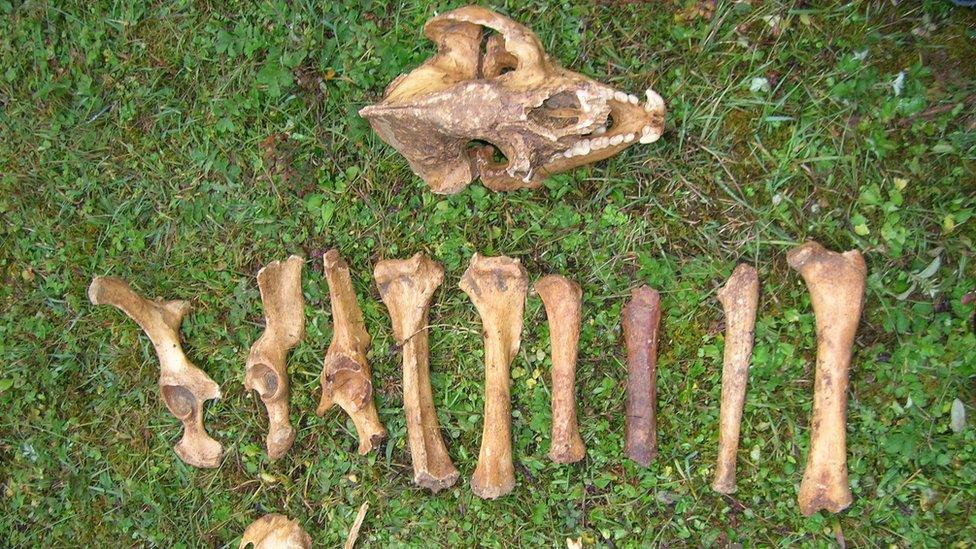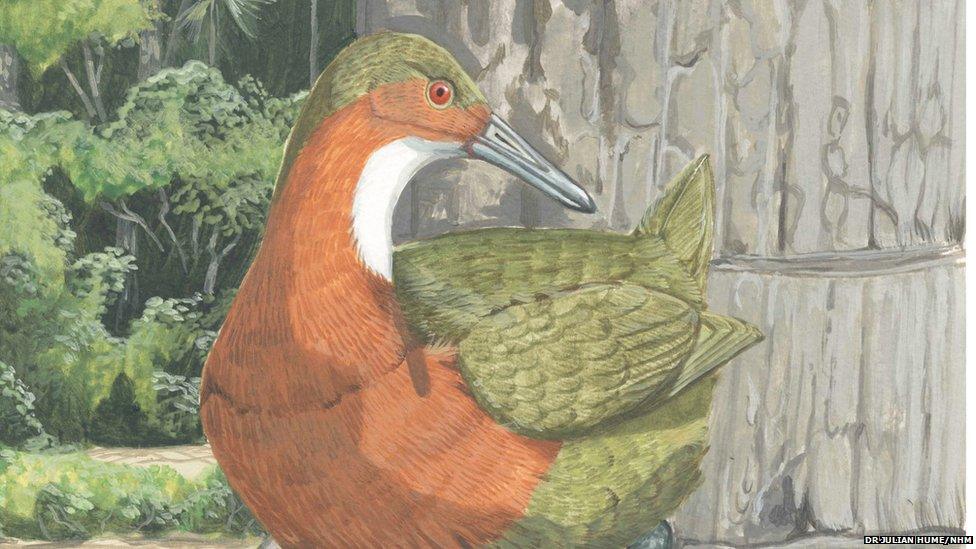Scientists discover ancient type of panda in fossil
- Published
- comments

Scientists have discovered the bones of a new species of panda, thought to be alive 5,000 years ago.
The bones were found at the bottom of a sink hole in Yunnan, China hundreds of miles away from where pandas live today.
The conditions of the sinkhole kept the thigh bone of the prehistoric beast in great condition, allowing the scientists to use the DNA to reconstruct its whole skeleton.
It's hoped the findings of the study could be used to help prevent the extinction of pandas.
There are currently only 2,000 pandas left in the forests of China today.

The ancient panda bones were found hundreds of miles away from where pandas are found today
Genes play an important role in forming how animals, including humans, look.
They carry information that makes an animal who they are and what they look like.
Many of these characteristics are passed down through a family by genes.
Dr Axel Barlow, who worked on the study, said: "It tell us what pandas were like thousands of years ago, in particular how they had different genes from modern pandas.
"We found that the ancient panda was from a completely different genetic background.
"Nowadays, pandas have a lot less gene differences than they did a few thousand years ago, so we need to be extra careful in looking after the gene differences that are left.
"As environments change, for example due to climate change, we need to make sure pandas are able to adapt to new environments and conditions."
- Published10 May 2019

- Published4 December 2017

